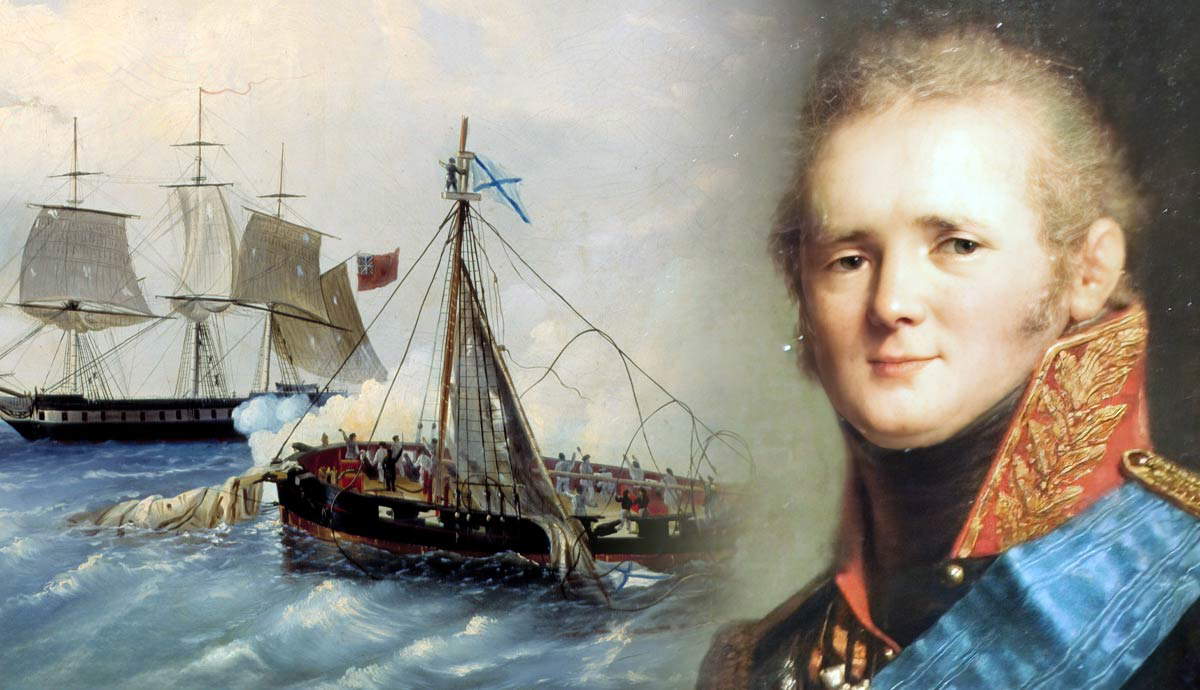
A large British force arrived off the shores of New York City in the summer of 1776. Under Sir William Howe’s command, this British army was expected to quickly defeat the inexperienced American Continental Army under George Washington. Howe’s army included a contingent of hired soldiers from several minor German states of the Holy Roman Empire.
These German troops, collectively known as Hessians, are among the most misunderstood participants in the American Revolution. Historian Robert K. Wright Jr. explains this results from several myths that have stuck for over two centuries. We’ll break down these myths about the Hessians and make sense of their role in the American Revolution.
Armies for Rent in Eighteenth-Century German States

The most enduring myth about the Hessians in the American Revolution is that they were bloodthirsty mercenaries. However, scholars argue that it is inaccurate to portray these German troops as mercenaries. Instead, it is better to consider the Hessians during the American Revolution as supporting or auxiliary troops hired to increase the size of British forces in the American Colonies.
In fact, the British essentially rented entire armies belonging to rulers of minor German states to serve in North America. Many small German states possessed large professional armies. For example, Hesse-Cassel maintained an army of 12,000 out of a population of just 275,000. Hesse-Cassel’s prince, Landgraf Friedrich II, rented his professional army to countries like Britain for considerable sums. In fact, David Head says that Hesse-Cassel’s agreement with the British during the American Revolution was equivalent to thirteen years’ worth of tax revenue.
Friedrich II invested this money in public works, education, and social welfare. David Hackett Fischer points out that the revenue from hiring Hessian troops was sorely needed in Hesse-Cassel during the 1770s. For example, travelers as late as 1750 found that Hesse-Cassel had not recovered from the devastation of the Thirty Years’ War, which had ended in 1648! The region again became a battlefield during the Seven Years’ War (1756-1763).
Hesse-Cassel was not alone in developing professional armies to rent to Europe’s military powers. In fact, as we’ll see, the British signed treaties with six German states during the American Revolution. Some states had troops fighting in the British, French, and Dutch militaries simultaneously.
Regarding recruitment, some German militaries relied on mercenaries to fill their ranks. But most relied on conscription to create the bulk of their professional armies.
The British Empire & The American Revolution

Despite considerable success on the battlefield, the British army remained small compared to other major European militaries like France, Prussia, and Russia. According to Daniel Krebs, the English Civil War of the previous century made many Britons suspicious of maintaining a large professional army.
As a result, in successive wars, British forces relied on swelling the army’s ranks with foreign troops. Most of these troops were essentially rented from the rulers of small German states like Hesse-Cassel.
Historian David Hackett Fischer found that British diplomats wanted to hire foreign troops to send to the American Colonies nearly a year before the outbreak of the American Revolution at Lexington and Concord in April 1775. However, nothing came from British efforts to secure additional troops as rulers like Catherine the Great of Russia refused requests or asked for an exorbitant price.
But by late 1775, British officials in London recognized that defeating the American rebels would require reinforcements in the form of hired foreign troops. The only realistic option was concluding treaties with various small German states of the Holy Roman Empire like Hesse-Cassel.
Subsidy Treaties

Colonel William Fawcett led British efforts to hire German troops to serve in North America. The British concluded the first of these treaties with the ruler of the German state of Brunswick in January 1776. Subsequent treaties on behalf of King George III and German rulers were concluded between early 1776 and October 1777.
Daniel Krebs states that over 30,000 German troops from the states of Hesse-Cassel, Hesse-Hanau, Brunswick, Anspach-Bayreuth, Anhalt-Zerbst, and Waldeck fought in the American Revolution. Many other German soldiers, mainly from Hanover, were recruited into individual British regiments during the war.
British officials did not know what to expect from many of these German troops. In fact, there were several bloody mutinies before the first convoys even left Europe. Indeed, some on the British side wondered if the soldiers were worth the money. British concerns would be put to rest at least temporarily by the summer of 1776.
From Victory to Victory in 1776

Two convoys carrying the first 8,000 Hessian troops arrived in New York in August 1776. In the coming months, these troops would be joined by additional Hessian and other German reinforcements. In August 1776, British commander Sir William Howe routed Washington’s army at the Battle of Long Island.
Historian Barnet Schechter points out that Hessian troops struck fear into Washington’s troops by their fierce demeanor and discipline under fire. Moreover, David Hackett Fischer notes that some Hessian commanders, like Count Carl von Donop, encouraged their troops to take no prisoners.
Patriot propagandists wasted little time responding to the British decision to recruit foreign troops to fight in America. In fact, the Declaration of Independence specifically referred to King George III’s decision to hire foreign troops to fight in America as one of the reasons for separating from Britain.
However, propaganda efforts did not stop British and Hessian success. In fact, Hessian troops played a significant role in British victories over Washington’s forces across New York in the summer and fall of 1776. For instance, under heavy fire at the October 1776 Battle of White Plains, Hessian troops advanced through a burning cornfield carrying their cartridge boxes over their heads to make sure that the ammunition would not explode. Moreover, Hessian troops dealt a decisive blow to American troops and forced the surrender of Fort Washington in November 1776.
While they vilified Hessian troops, American rebels also sought to recruit German troops to the American cause or at least desert from the British army. For example, Daniel Krebs says that Pennsylvania militia sent some captured Hessians on a tour of Philadelphia before sending them back to their units to encourage desertion to the Patriot cause.
Defeat in 1776: The Surprise at Trenton

British forces chased Washington’s dwindling army across a cold, wet New Jersey in the winter of 1776. But Howe soon retired to winter quarters in New York City, leaving some troops to garrison several towns in New Jersey. Washington established camp across the Delaware River in Pennsylvania.
With most of the army’s enlistments due to expire by the end of the year, Washington resolved to attack and secure a victory after so many defeats. He settled on a risky surprise attack on Hessian troops at Trenton, New Jersey during Christmas celebrations.
Colonel Johann Gottlieb Rall commanded Hessian troops at Trenton. Rall had spent thirty-six of his fifty years of life in the Hessian army. Despite being a harsh disciplinarian, Rall was popular with his troops. Together, they settled down to a festive Christmas celebration.
Washington had other plans for the Christmas holiday. After ferrying his army across the icy Delaware River, Washington attacked Rall’s unsuspecting garrison at Trenton on December 26.
Contrary to popular belief that the Americans quickly routed drunk Hessian troops, David Head notes that Rall’s men put up stiff resistance. However, Hessian troops were soon surrounded by Washington’s troops and forced to surrender.
Washington’s troops took over 800 Hessian prisoners at Trenton. Rall died of wounds received shortly after the battle.
The War Continues

Washington’s dramatic victory at Trenton in December 1776 formed part of what historians call the Ten Crucial Days that saved the American cause. At the same time, the Battle of Trenton severely damaged the reputation of German troops in the eyes of the British and Americans. Colonel Rall’s defeat led to another myth about the Hessians, namely that they were more concerned with plunder and drinking than fighting with honor and discipline.
This is not to say that Hessian troops did not plunder during the American Revolution. In fact, there were numerous instances of plundering and other crimes committed against civilians. Historian David Head notes that these attacks on civilians pushed many neutrals or indifferent Americans to support the Patriot cause.
Nevertheless, while historians have found the post-Trenton criticism of the Hessians unfair, the damage was done to the collective psyche of German officers in North America. Indeed, Hessian officer Count Carl von Donop became obsessed with avenging the honor of his troops after Trenton.
Von Donop believed his chance to recover glory for the Hessians came at the October 1777 Battle of Red Bank in Fort Mercer, New Jersey. It is said that before the battle, he declared, “Either there will be a Fort Donop or I shall be dead.” Von Donop was killed, and the attack failed.
German troops also suffered a staggering defeat during the 1777 Saratoga campaign at the Battle of Bennington. Moreover, several thousand mostly Brunswick troops became American prisoners after the British surrender at Saratoga.
Prisoners of War

Historian Daniel Krebs found that roughly 5,400 German soldiers fell into American hands between 1776 and 1783. Many of these troops were captured at Trenton or in the American victory at Saratoga in October 1777.
German and British troops were largely kept in separate prisoner-of-war camps. This was partly due to hopes that the Americans could successfully convince German troops to abandon the British war effort. In general, though, British and German prisoners were marched to camps in similar areas of the country. Many spent the remainder of the war in camps scattered across central Pennsylvania, western Maryland, and Virginia. As historian Daniel Krebs points out, many German prisoners were granted opportunities to work for local farmers or merchants. This experience also likely influenced some German prisoners to remain in North America after the war.
Despite the decisive victory at Yorktown in October 1781, Washington’s army faced serious internal challenges. In response, Congress sought to recruit German prisoners of war to serve in Washington’s army. However, this campaign met with limited success.
Aftermath

As we’ve seen, American Patriots had a complicated relationship with German soldiers in the British service. On the one hand, American propagandists condemned German troops as murderous mercenaries. Their arrival in America was even used as part of the justification to declare independence from Britain. However, at the same time, many Americans actively recruited German soldiers to desert and join the Patriot cause.
The German soldiers in American prison camps were released by May 1783. Most returned to Europe. However, others decided to stay in North America, where they received land offers from both the young United States and the British in Canada. For example, many former prisoners remained in the vicinity of where they had been held, such as Frederick, Maryland and York, Pennsylvania. Soldiers who returned to Germany and their families received state pensions well into the following century.










